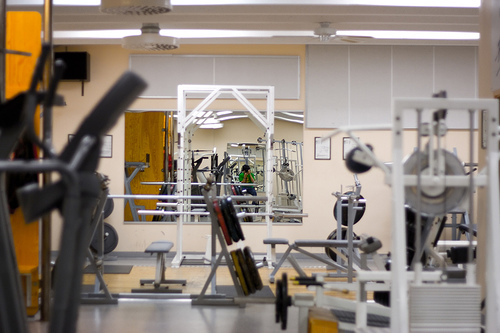- You are here:
- Home »
- Blog »
- Training »
- What muscles do dips work out?
What muscles do dips work out?
The dip exercise and all of its variations are one of the most fundamental exercises for improving mass and strength in upper-body muscles. So what muscles do dips work out?
Muscles directly worked – triceps
Muscles indirectly worked – delts, chest, rhomboid
It is important to note that there are different variations of the dip that can target muscles in different ways, but the primary muscles worked are almost always the chest and triceps. You can see what a basic dip looks like in the video below and learn how to perform the movement.
The dip is performed with a stable and upright position between your knees up to your head. Only your arms perform active movement, which leads to the up and down movement. Shorter people may be able to keep their legs straight during this exercise, but most people will have to bend at the knees to tuck their lower legs behind them.
This essentially puts you in a kneeling position except you are hanging from a dip bar, which puts the majority of stress on your arms, elbows, shoulders, and chest. From there, you press down, using your triceps, chest, and shoulders, to lift yourself up and extend your body over the dip bar.
Your upper-body has a slight forward lean during the dip. Your elbows are tucked mostly by your side. The goal on each rep is to lower your shoulder to just slightly below parallel to the elbow and then extend yourself back up away from the bar. The head and spine should be in a neutral position.
To increase chest engagement on the dip, you can simply lean your upper-body forward more. This is still working all of the same muscles, but it causes all of the pectoral muscles to do a greater percentage of the work throughout the range of motion. You can also move your legs forward, as opposed to tucking them behind you. This is done to target the chest and maintain balance.
To focus almost entirely on the triceps muscles, you can simply do the opposite. Rather than having a forward lean with the upper-body, keep your spine entirely upright. This greatly reduces the load and the chest and blasts the triceps muscles. You’ll also want to make sure the legs are tucked behind you with this variation.
Keeping the core properly activated is important for any variation of the dip. While they aren’t the primary muscles used, the abdominals, obliques, and lower back all play a major role in getting quality repetitions. These core muscles are used almost entirely for stabilization.
This is important both for allowing your arms to do the work and to prevent too much extra movement during the exercise due to lack of balance. There are meany lean people with strong arms who struggle with the dips due to a weak core. If your core can’t stabilize your posture, you will be flopping around too much to get any good reps in.
There are also many alternatives to the dip. A good alternative will target all of the same muscles, but do so simply by using different exercises. So in this case, you would want the exercise to work primarily the triceps and chest muscles, with assistance from the delts.
Many beginners look for different exercises to work these muscles because dips can be very challenging. If you have a weak upper-body compared to your bodyweight, you will struggle to do dips. This is because they require you to lift your entire body using only muscles from your arms, chest and delts.
Dips can also put a real strain on the elbows and shoulder joints. Anyone with these problems may look for a different exercise. Things like close grip bench press, dumbbell kickbacks, cable pushdowns, and really anything that target the triceps are good choices.
Those exercise can work out all of the same muscles without overly stressing anything else. Even if you are strong and capable, it is a good idea to mix it up. Doing any type of dips too much can stall progress of both strength and size gains. It is important to know what muscles dips work out so you know how it fits into your overall training program.
Photo By: Chun Kit To


